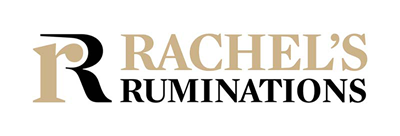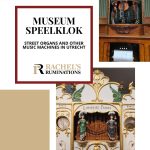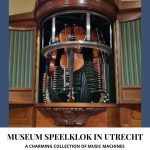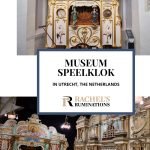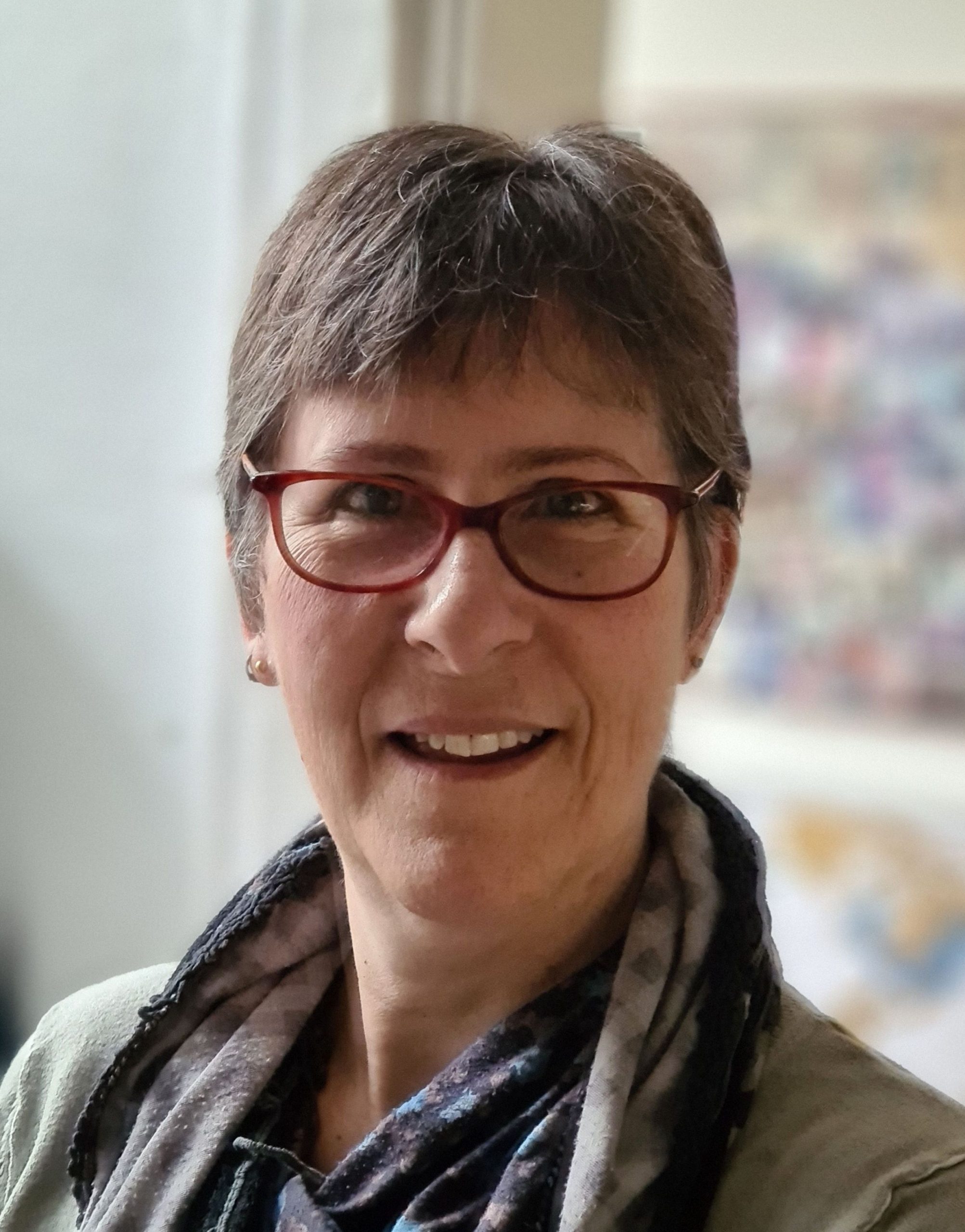Museum Speelklok in Utrecht: Mechanical music from the past
I was walking around Utrecht one day, with a free afternoon between meeting my sister-in-law for lunch and going to my daughter’s house in the evening. I checked out the Dom Tower – though I didn’t climb it because there were no tickets left – and spent a pleasant hour or so in the Museum Catharijne Convent, a small collection of medieval art inside an old convent.
As I strolled rather idly along, I noticed what looked like one of those perpetual motion machines in a window of an old church. It wasn’t working, as far as I could tell, but it sparked my curiosity. Walking a few steps further, I saw the sign for the Museum Speelklok.
Despite speaking Dutch pretty much fluently – but with a terrible American accent – I had no idea what a Speelklok is. I decided to investigate.
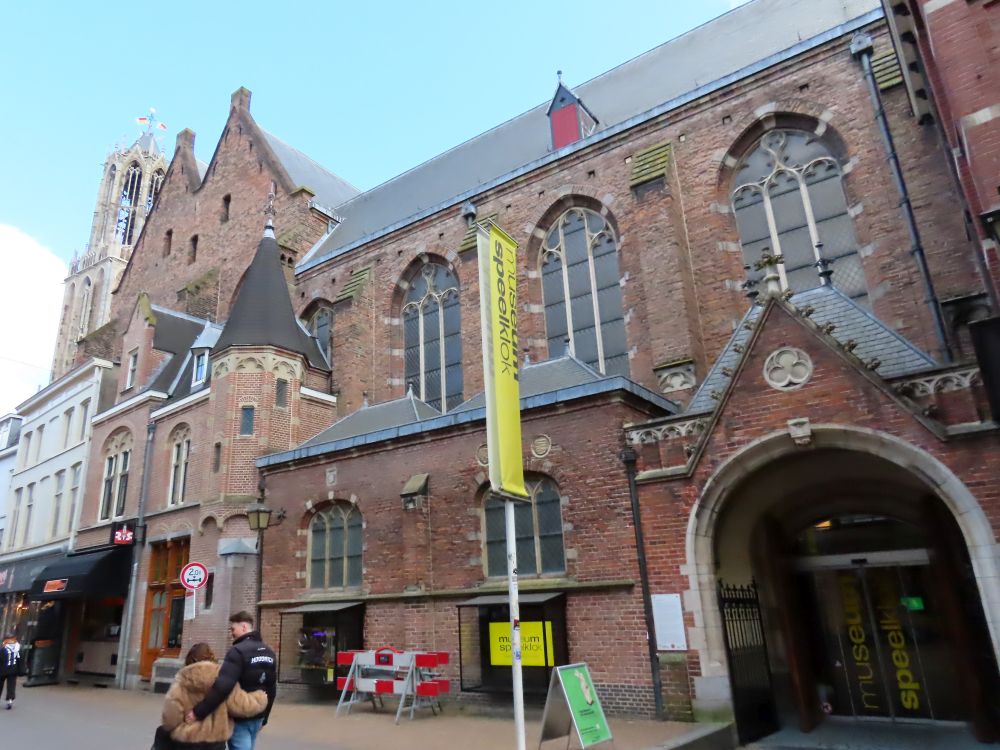
Disclosure: This article contains affiliate links. Making a purchase through an affiliate link will mean a small commission for this website. This will not affect your price.
What is a speelklok?
A speelklok is, basically, a music machine. It could be an organ, meaning the kind an organ grinder would carry around, operating it with a crank. Or it could be a larger version of the same thing that runs using a motor. But the word can also apply to those old clocks with figures that appear and twirl to music at the top of the hour, or to a music box of any size.
But, not knowing any of that, I went in. Fortunately, a guided tour was just starting, and the receptionist said that she highly recommended starting with the tour, so I joined in.
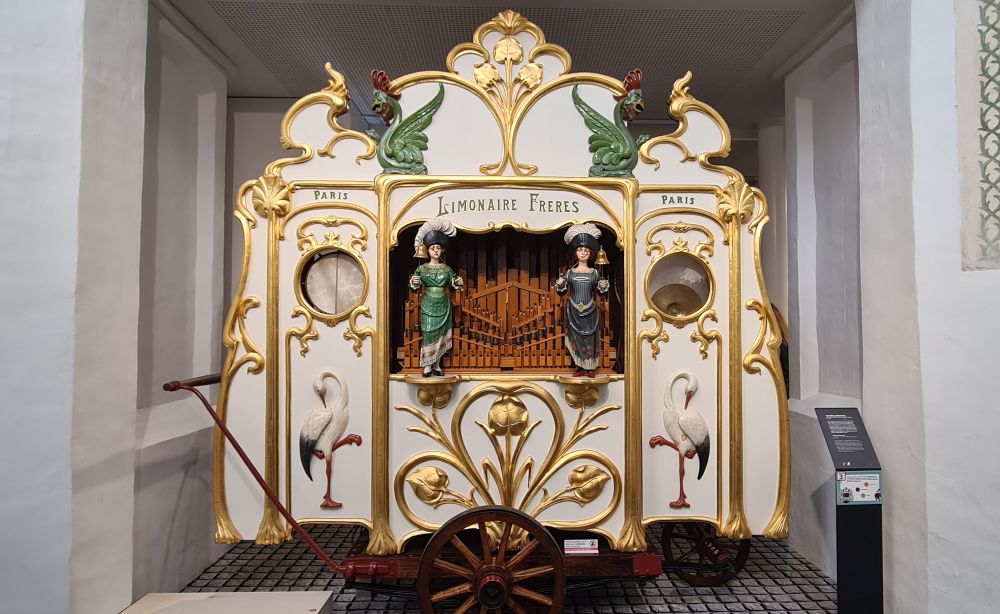
The guided tour of the Museum Speelklok
The tour – in both English and Dutch – started with small antique machines from the 18th or 19th century, produced for home entertainment: music boxes that played using little combs, then later ones that used round metal disks with holes in them like music boxes. Some had moving figures as well. Of course, only the wealthy could afford parlor gadgets like these. The tour guide demonstrated a few of these, to the delight of the small children in the group.
The tour guide explained how such music machines eventually reached the less wealthy: an organ grinder would carry the box hanging on his chest like a backwards backpack. He turned a crank on the side to play the music as he walked the streets. Some of these boxes were remarkably richly decorated and must have been awfully heavy! The musical notes came from folded strips of paper with punchholes that gears fed into the machine.
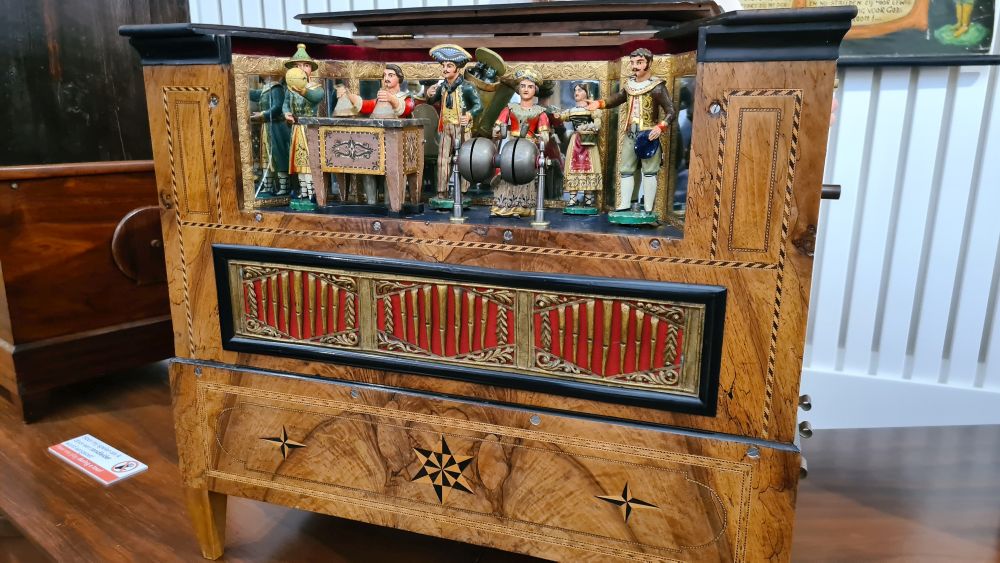
Again, the tour guide opened one of these for us and played it. She also allowed one of the children in the group to crank one to make it play; it was hard work!
These hand-carried versions, she explained, were succeeded by larger ones on wheels, which could play more different instruments’ sounds: an organ, but also drums and bells and such. We have one that still operates here in downtown Groningen, where I live. Until I visited this museum, I never really paid much attention to it – just part of the background of life in this city.
These bigger speelklokken (plural of speelklok) could create the sounds of lots of instruments, but not violins … until the invention of the violina. The guide led us to what looked like an organ, with organ pipes but with a large rounded cabinet in its center. Opening the cabinet doors revealed a contraption inside. Three (or possibly four or five?) violins stood upright in a circle. Once she turned the mechanism on, we could hear and watch how it played. Levers press the strings, one string per violin, while a round bow rotates to play them all at once.
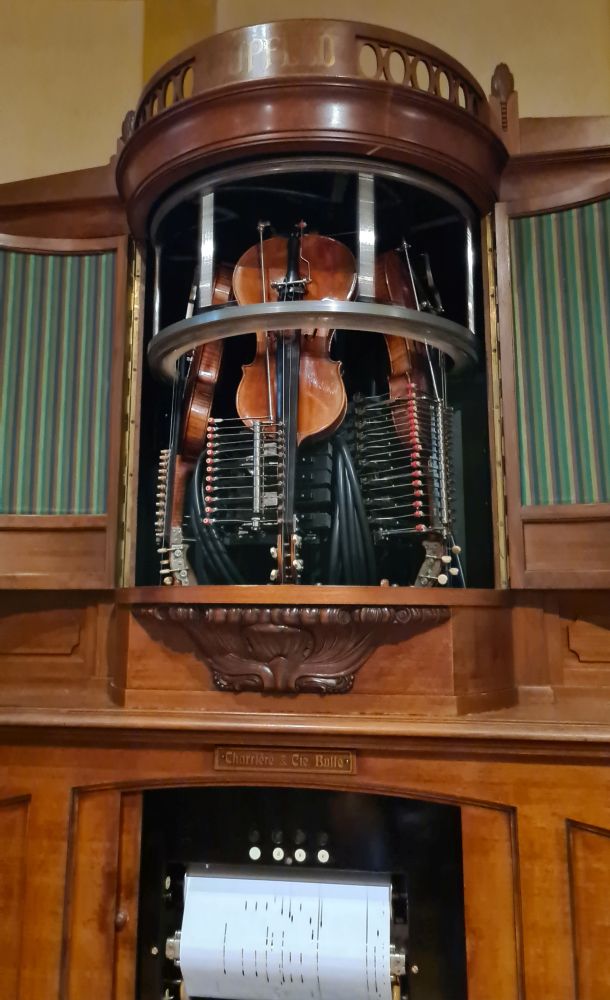
Next we stepped into a separate room with black-painted walls and absolutely enormous dance-hall organs on all sides, all of them brightly lit and ornately painted in the styles of about the turn of the 20th century. Besides dance halls, they might be played at events like fairs as well.
The guide turned one of them on and all I can say is: it was loud! So loud I sat there on a bench with my fingers in my ears, waiting for it to be over. These dance-hall organs would have operated in actual dance halls, much larger than this space, or outside. The organs needed to be heard above the general noise of people talking and dancing feet.
That was the end of the tour, and the guide told us we were welcome to explore the rest of the collection.

A word about Utrecht
Utrecht is a lively and pretty city that is less crowded than Amsterdam. It’s definitely worth a few days to stroll its streets and visit its landmarks. And since it’s only about a half-hour by train from Amsterdam or Rotterdam, it might be worth making it your home base and taking day trips from there. Read more about Amsterdam here and take a look at this self-guided Rotterdam walking tour.
Click on the map below to book accommodations in Utrecht. I’ve centered the map on the Dom Tower, the tall tower in the center of the oldest part of the city.
Consider taking this canal tour or this walking tour of Utrecht.
The Buurkerk
Since I had rushed to join the tour, I hadn’t until now really taken in the building around me, the Buurkerk. It’s a parish church dating originally to the 12th century, though it burned several times. The unfinished tower is from the 14th century.
Like many churches in the Netherlands, the Reformation in the 16th century meant the decorations were removed to suit the more somber Protestant beliefs. It stopped being used as a church in the 1970s and eventually this museum took it over. Today it is mostly painted white, so little of the original detail is visible. However, you can still see the general shape and the large windows. It struck me as a good use of a decommissioned church.
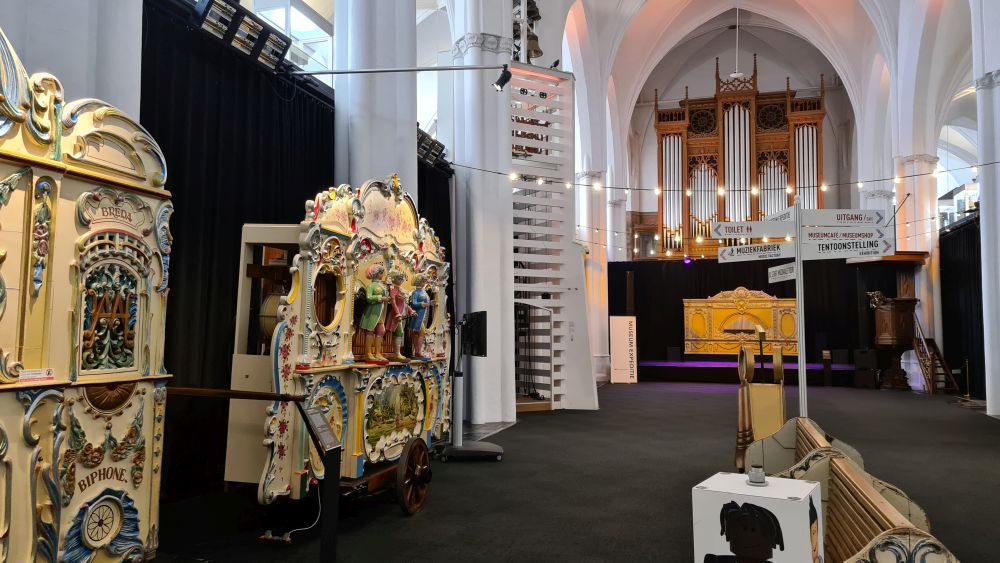
Other exhibits
There was indeed more to see. One section downstairs held ornately decorated table clocks and grandfather clocks. These count as music machines because they have mechanisms inside that play a melody, rather than just ringing bells on the hours. Some have moving figures that emerge or rotate as well.
Upstairs, on what was once the balcony of the church, are many more music boxes of every sort you can think of, operating with lots of different mechanisms, but usually some sort of material with punch holes. There were also a few player pianos, which are essentially music boxes too, when you think about it.
Church tower bells also get a mention upstairs, including the old ones from this church. They often were automatized at some point in the past using some material with punchout holes to trigger their mechanism. Our Martinitoren here in Groningen has one of these machines, using a metal disk with punch holes.
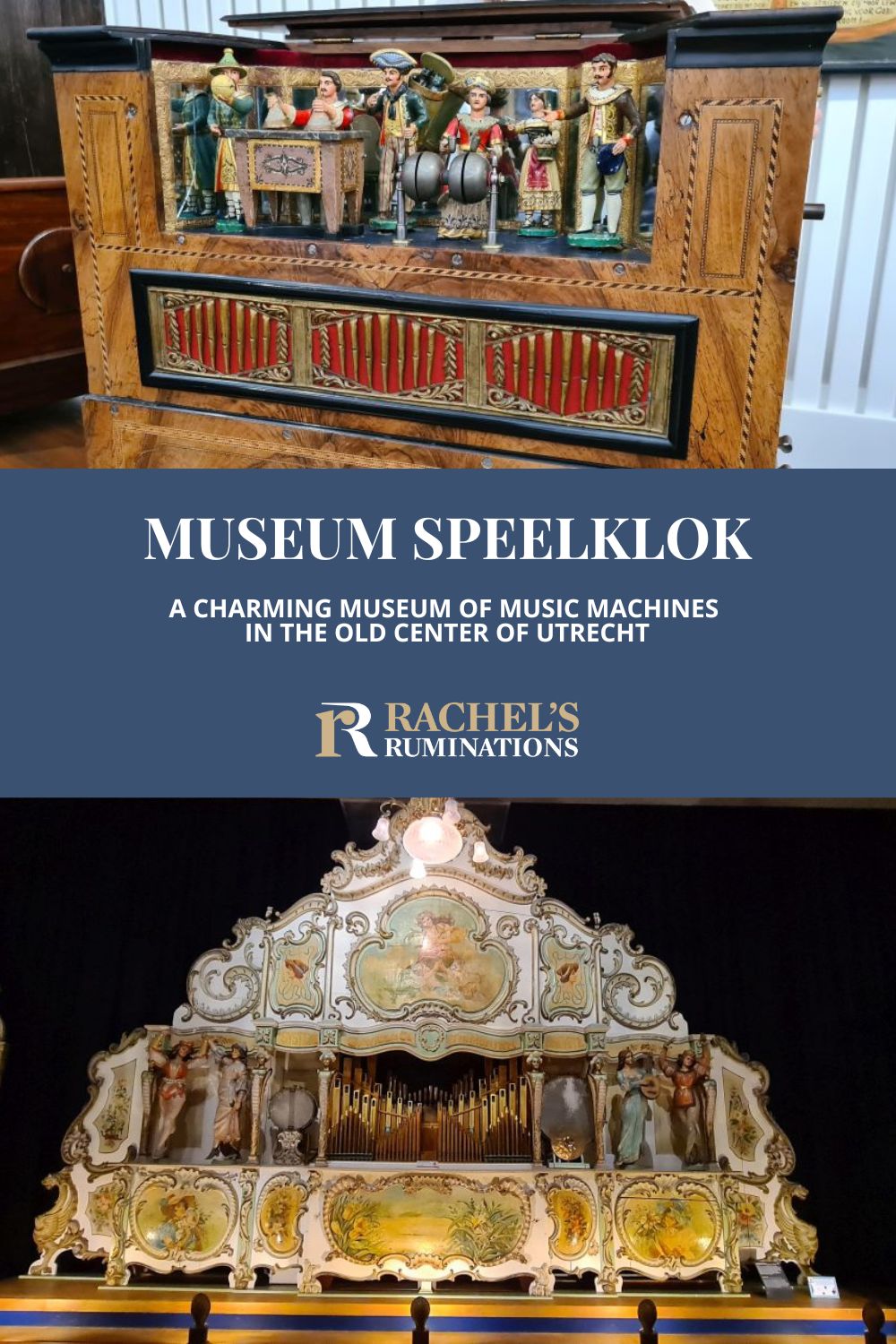
Despite how obscure the topic of music machines is – something I’d never had any interest in – I found the Museum Speelklok quite charming. Its collection is very varied, from tiny music boxes to huge dance-hall organs. And many of them are decorated in ways that would have been popular in their historical era, but that are wonderfully quaint today.
I think it would have been less entrancing if I hadn’t taken the guided tour, so that I could actually hear a representative sample of their collection. The guided tour happens every hour all day, and in my view it’s a must if you’re going to visit the museum. It’s included with your admission price. If you’re in Utrecht with kids, make sure to start with the tour, which is very child-friendly.
Museum Speelklok: Steenweg 6, Utrecht, 10 minutes’ walk from Utrecht Central train station. Open Tuesday-Sunday 10:00-17:00 and Mondays during school vacations. Buy your tickets here. The museum is entirely wheelchair-accessible. Website.
My travel recommendations
Planning travel
- Skyscanner is where I always start my flight searches.
- Booking.com is the company I use most for finding accommodations. If you prefer, Expedia offers more or less the same.
- Discover Cars offers an easy way to compare prices from all of the major car-rental companies in one place.
- Use Viator or GetYourGuide to find walking tours, day tours, airport pickups, city cards, tickets and whatever else you need at your destination.
- Bookmundi is great when you’re looking for a longer tour of a few days to a few weeks, private or with a group, pretty much anywhere in the world. Lots of different tour companies list their tours here, so you can comparison shop.
- GetTransfer is the place to book your airport-to-hotel transfers (and vice-versa). It’s so reassuring to have this all set up and paid for ahead of time, rather than having to make decisions after a long, tiring flight!
- Buy a GoCity Pass when you’re planning to do a lot of sightseeing on a city trip. It can save you a lot on admissions to museums and other attractions in big cities like New York and Amsterdam.
- Ferryhopper is a convenient way to book ferries ahead of time. They cover ferry bookings in 33 different countries at last count.
Other travel-related items
- It’s really awkward to have to rely on WIFI when you travel overseas. I’ve tried several e-sim cards, and GigSky’s e-sim was the one that was easiest to activate and use. You buy it through their app and activate it when you need it. Use the code RACHEL10 to get a 10% discount!
- Another option I just recently tried for the first time is a portable wifi modem by WifiCandy. It supports up to 8 devices and you just carry it along in your pocket or bag! If you’re traveling with a family or group, it might end up cheaper to use than an e-sim. Use the code RACHELSRUMINATIONS for a 10% discount.
- I’m a fan of SCOTTeVEST’s jackets and vests because when I wear one, I don’t have to carry a handbag. I feel like all my stuff is safer when I travel because it’s in inside pockets close to my body.
- I use ExpressVPN on my phone and laptop when I travel. It keeps me safe from hackers when I use public or hotel wifi.
